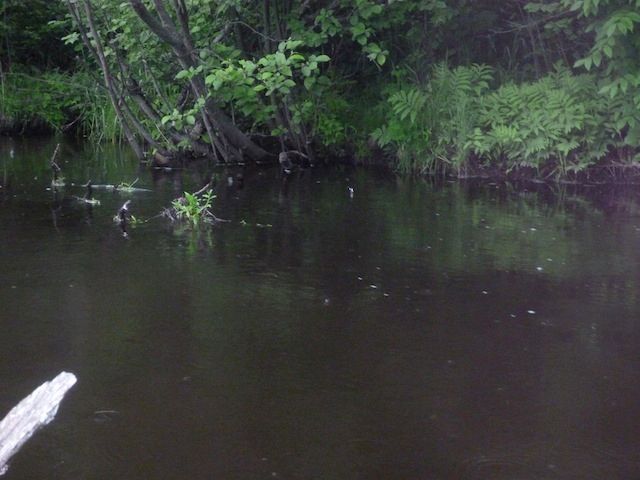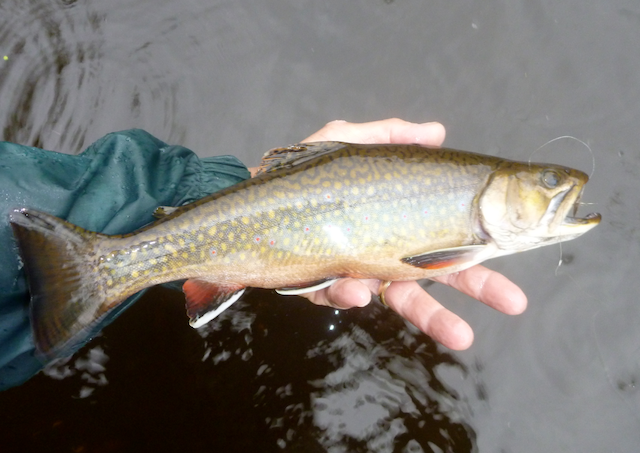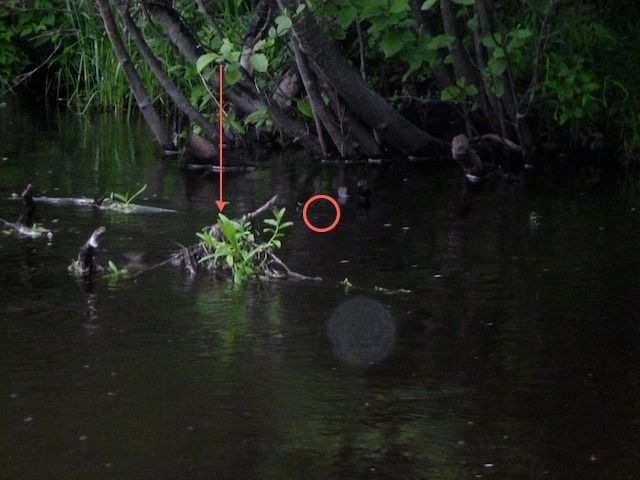
I think your method has a good chance of hooking the fish.
But it would be difficult to land the fish from the upstream side. There are sunken branches on both sides and one above the fish as you can see from the photo. You would need to bring the fish up and through the sunken branches.
This is where I had to cast from, I am about 15 feet away. This is the best place from which to cast.

This is what I caught, a nice Brook Trout.

The oval is where I cast to catch the fish.

Why did I cast BEHIND the rise? Isn't that behind the trout? Well here is my reasoning.
I knew that I could not land the fish by floating a fly down to it from above because of the debris in the water above the rises.
So my only choice was to try to cast from where I was.
Normally when we see a fish rising, we cast well ABOVE the rise. In open water, a feeding fish normally holds above the rise point, and he drifts back and up to take the fly. So we cast above the rise and let the fly come into his window.
In this case, I cannot cast above his rise point from my position because the leader or the fly would get tangled in the branch closest to me. That would shut down the fish.
The key to catching this fish is if the fish is holding deep enough or back far enough that his window includes the area behind the rise point that is free of snags. We normally think of the window as only being in front of the fish, but the window is a circular cone that includes the area to the side and behind the fish's eyes. The diameter of the window is twice the depth the fish is holding. So if the fish is holding 18 inches deep, the window is 3 feet in diameter.

My only chance was to cast behind the obstructions, and hope his window went back that far; or that if the fly was out of his window, the impression of the fly landing on the water would get his attention.
I used a sidearm roll cast to gain a bit of downstream angle on the cast and I gradually worked my cast from downstream to upstream. If you try to make a perfect first cast to just barely miss the leafy branch, you could hook the branch and it would be all over. But if you gradually work the fly from downstream to upstream, you may find that you don't need that perfect cast, because the fish can see further back than you think he can.
The other good thing about where I cast, is that when the fish took the fly, it was even further downstream and away from the snags. I was able to pull him further downstream and away from the debris.
Normally, you don't want to land a fly directly in the window, but in this case, my hope was the window was large enough for me to hit the back part of it.
A put this puzzle on another BB and one poster suggested casting so the leader fell over the branch in front of the rise and then hoping that the leader pulled free of the branch when the fish took. But you only get one chance and the branch is tilted the wrong way. I have cast over objects like boulders and bent reeds to place a fly in the right place.
Regards,
Silver
"Discovery consists of seeing what everybody has seen and thinking what nobody has thought"..........Szent-Gyorgy








 Reply With Quote
Reply With Quote